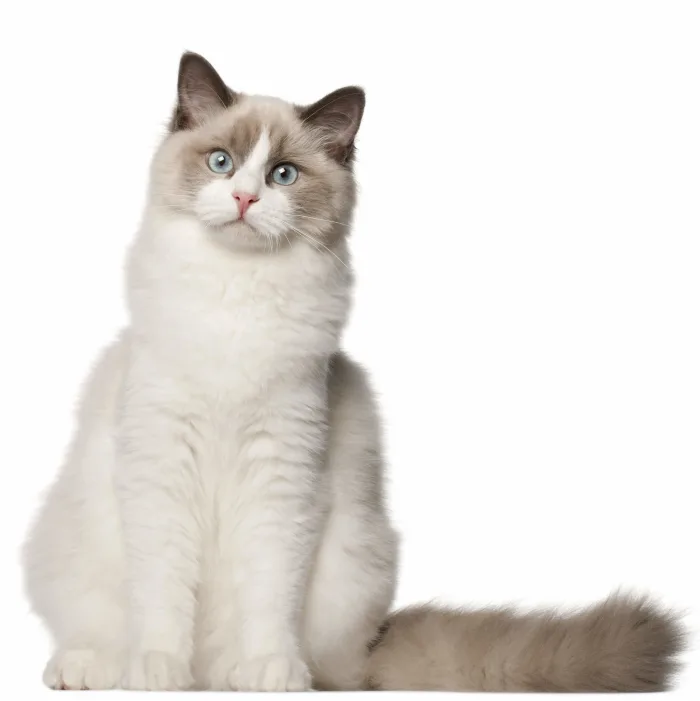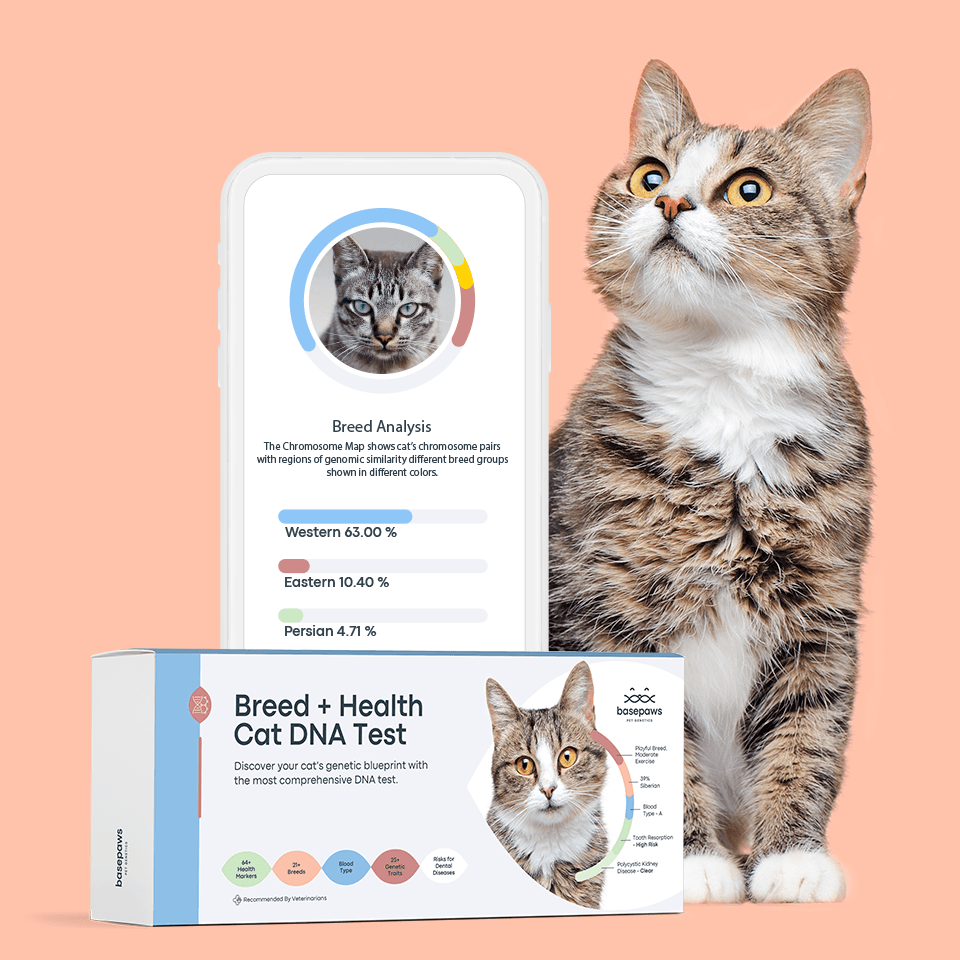Discover your cat's connection to this breed and 20 others


Discover your cat's connection to this breed and 20 others



Ragdolls are blue-eyed beauties known for their affectionate nature and tendency to go “limp like a ragdoll” when carried. They make wonderful family pets and get along well with other cats and dogs.
The Ragdoll is considered one of the world's largest cat breeds, along with the Maine Coon, with an average weight that ranges from 10 to 15 pounds. These friendly felines are semi-longhaired, blue-eyed, colorpoint cats that come in in a variety of coat patterns, colors, and colorpoint combinations. The four patterns include bi-color, van, mitted, and colorpoint. These patterns come in blue, seal, chocolate, lilac, cream, and red colors and colorpoint can be solid, lynx, tortie, or a combination of tortie and lynx called "torbie".
The Ragdoll is native to the United States. It is said to have originated in California during the 1960s when breeder Ann Baker bred Josephine, a free-roaming domestic white longhaired cat, with other free-roaming cats in her neighborhood. As she continued her breeding program, Ann selected cats with specific aesthetic qualities and temperaments to create what we know today as the Ragdoll. Though there is no way to know, some believe that Josephine may have possibly been a hybrid of a Persian, Birman, or Siamese.
These elegant kitties are easygoing, calm, sweet-natured, and known to enjoy cuddles. They exhibit quirky behaviors such as drinking water from the faucet or going "limp like a ragdoll" when held. They are the ultimate lap cat, and their docile manner makes them perfect companions for families with children or other pets.
The Ragdoll is a strong, robust breed that can live a long and healthy life when nurtured properly. These cats are, however, at a higher risk for developing feline infectious peritonitis (FIP) and hypertrophic cardiomyopathy (HCM). HCM can be caused by several genetic mutations that have been identified in about 20 percent of Ragdolls.
Ragdolls love to be picked up and cuddled. While many cats may only enjoy the occasional cuddle, it is uncommon for cats to love being held. A Ragdoll, however, is relaxed and floppy when picked up—a true reflection of their name!
Their eyes are always a piercing blue. Although Ragdolls come in a range of colors and patterns, their eyes are always blue. This is influenced by the same temperature-sensitive mutation in the tyrosinase (TYR) gene that encodes for the color-pointed coat.
They are one of the largest domestic cats. According to the Cat Fanciers' Association (CFA), Ragdolls, together with Maine Coons, are the two largest registered breeds. Next in line is the beautiful Norwegian Forest Cat.
Ragdolls are known as both the 'lap cats' and 'puppy cats'. Because of their cuddly personality and unusual friendliness, they are often referred to as the ideal lap cat that many of us dream about. But because of their docile, calm, playful, and silly personality, they are also often called puppy cats. Yes, they are that purrfect!
The world's longest-living Janus cat was a Ragdoll. A Janus cat is a cat with two faces. The world's longest living Janus cat was a Ragdoll named Frank and Louie. He had two functioning right and left eyes, one central blind eye, two noses, and two mouths. His deformity was caused by disprosopia, and he was rescued from euthanization by Marty Stevens, who was a veterinary nurse at the time. Thanks to Marty, he ended up living for 15 years before passing away in 2014.
Recommended by top vets with decades of experience
21 breeds
64 genetic health markers
50 genetic trait markers
